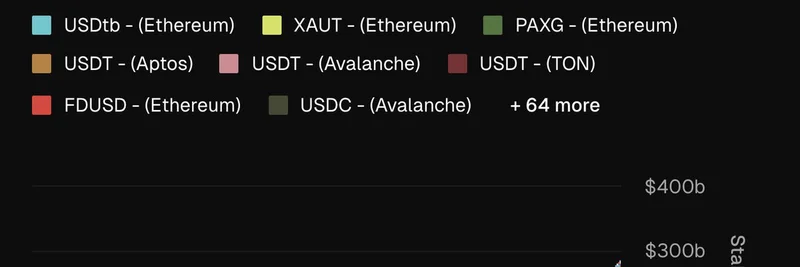In the fast-paced world of cryptocurrency, stablecoins play a crucial role as the reliable anchors that keep things steady amid volatility. They're digital assets pegged to stable fiat currencies like the US dollar, making them essential for trading, DeFi (decentralized finance), and even everyday transactions in the blockchain space. But recently, a tweet from Token Terminal highlighted an intriguing shift in this sector that's got everyone talking.
The post points out the top two stablecoins by market dominance: USDT (Tether) and USDC (USD Coin). These giants have long ruled the roost, but they don't offer any yield—or returns—to their holders. In contrast, the emerging challengers, USDe from Ethena Labs and USDS from Sky Ecosystem (formerly MakerDAO), are flipping the script by providing yield to those who hold them. This could be a game-changer, especially for investors looking to earn passive income without taking on extra risk.
Looking at the chart shared in the tweet, we can see the explosive growth in stablecoin supply over the years. Starting from nearly zero in 2018, the total supply has skyrocketed to over $300 billion by 2024. USDT on Ethereum leads the pack in deep blue, followed closely by USDT on Tron in orange. Other variants like USDC on various chains fill in the layers, showing how these assets have spread across blockchains like Solana, Arbitrum, and Base for better scalability and lower fees.
What's fascinating is how this growth reflects broader adoption in crypto. For meme token enthusiasts—our core audience here at Meme Insider—stablecoins like these are the lifeblood of trading pumps and dumps on decentralized exchanges (DEXs). They provide the liquidity needed to jump in and out of volatile meme coins without converting back to fiat each time.
But why the buzz around yield-bearing stablecoins? Traditional ones like USDT and USDC are backed by reserves and focus on stability, but they don't generate interest. USDe, for instance, uses a synthetic dollar model backed by staked ETH and derivatives to offer yields from staking rewards and funding rates. Similarly, USDS builds on the Dai stablecoin legacy but introduces rewards for holders through the Sky ecosystem's governance and savings features.
This innovation could attract more capital into the ecosystem, especially in a high-interest-rate environment where traditional savings accounts are competing for dollars. For blockchain practitioners, it means potentially higher returns on idle funds, which can then be funneled into meme token launches or DeFi protocols.
Of course, it's not all smooth sailing. As one reply to the tweet noted, factors like liquidity depth, regulatory compliance, and easy on/off-ramps (ways to convert between crypto and fiat) will ultimately drive adoption. Challengers like USDe and USDS still have to prove their resilience in market downturns, but their yield feature is a strong hook.
If you're diving into meme tokens or just keeping tabs on crypto trends, keeping an eye on these stablecoin developments is key. They underpin the entire market, and shifts here could ripple out to affect everything from token prices to trading volumes. For more insights, check out Token Terminal's analytics dashboard or follow updates from issuers like Tether, Circle, Ethena Labs, and Sky Ecosystem.
Stay tuned to Meme Insider for more breakdowns on how these trends impact the wild world of meme coins and blockchain tech.



